#Minneapolis & St Louis Railway
Explore tagged Tumblr posts
Text

0 notes
Text


1910 - Duluth - Minnesota - St Louis County - Soo Line Railyard - And Camden Bridge.
The Soo Line Railroad (reporting mark SOO) is one of the primary United States railroad subsidiaries for the CPKC Railway (reporting mark CPKC), one of six U.S. Class I railroads, controlled through the Soo Line Corporation. Although it is named for the Minneapolis, St. Paul and Sault Ste. Marie Railroad (MStP&SSM),
Duluth is also the birthplace of Bob Dylan (May 24th 1941)
Images by The Detroit Photo Co
3 notes
·
View notes
Text
What-If: American Railroads — Maps
I deeply apologize for not coming back to this alternate railroad history topic in over a year, I’ve had a lot of other things to do and i merely scratched the surface of this railroad history topic. and therefore, I’ve thought long and hard about this whole thing.
Aside from that apology, i thought to myself since I have Procrate, why not make maps of the 20 American railroads in my alternate history about said American railroads? And that’s what I did. Each map below shows the 20 railroads after they absorbed the smaller railroads as well as some of them expanding their networks in the 1980s wherever possible.

New York Central — this map shows the New York Central after the road to the future absorbed Boston & Maine, New Haven , Delaware & Hudson, Rutland Railroad, Bangor & Aroostook, Central Vermont And Maine Central railroads.
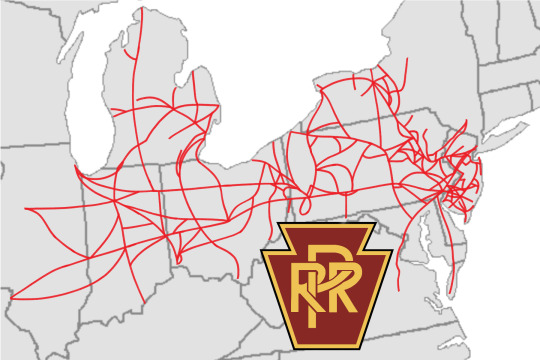
2. Pennsylvania Railroad — This map shows the size of the Pennsylvania Railroad after it absorbed Lehigh New England, Reading Lines/Railroad, Richmond, Fredericksburg and Potomac, Lehigh Valley, Lehigh and Hudson River, Central Railroad of New Jersey, Grand Trunk Western and Pennsylvania-Reading Seashore Lines railroads.

3. Chesapeake & Ohio — This map shows the Chesapeake & Ohio after it acquired the Erie Railroad, Lackawanna Railroad and New York, Ontario & Western Railway, plus the northern section of the Louisville & Nashville Railroad throughout the 50s and 60s, as well as expanding its network in the 80s.

4. Baltimore & Ohio — This map shows how big the Baltimore & Ohio got after America’s first railroad absorbed Pittsburgh and Lake Erie, Western Maryland, Wabash, Ann Arbor, Virginian railroads.
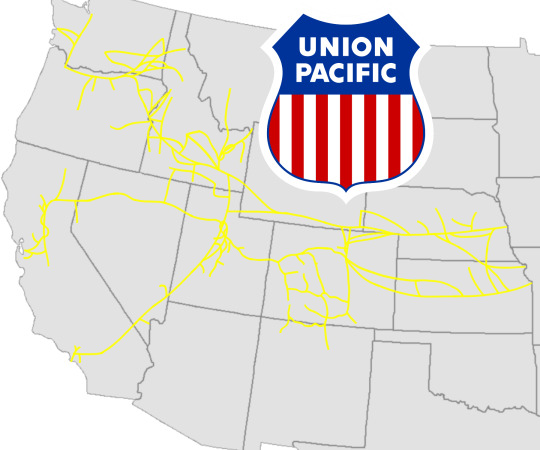
5. Union Pacific — Here, this is how big Union Pacific got after absorbing the Western Pacific and Rio Grande railroads, as well as adding more mainlines in the eighties.
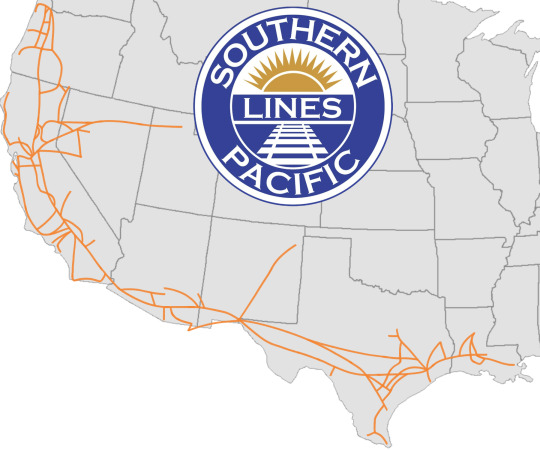
6. Southern Pacific — This map shows the Southern Pacific after adding more mainlines to its network in the eighties.

7. Northern Pacific — For this map, it shows how big the Northern Pacific Railway got after absorbing the Chicago Great Western and Duluth, Missabe and Iron Range railroads, as well as adding more mainlines to its network in the eighties.

8. Milwaukee Road — This map shows how big the Milwaukee Road got after the “Route of the Hiawatha” expanded its network by widening its existing mainlines and adding more mainlines (wherever possible) and expanding to northeastern Minnesota throughout the eighties.

9. Burlington Route — This map shows the Burlington Route after it absorbed the Kansas City Southern in the early 1960s and later expanded its network in the eighties.

10. Chicago & NorthWestern — This map shows the size of Union Pacific’s ancient partner; the Chicago & NorthWestern, after it absorbed the Wisconsin Central and the Minneapolis and St. Louis railroads in the 60s plus expanding its network in the 80s.
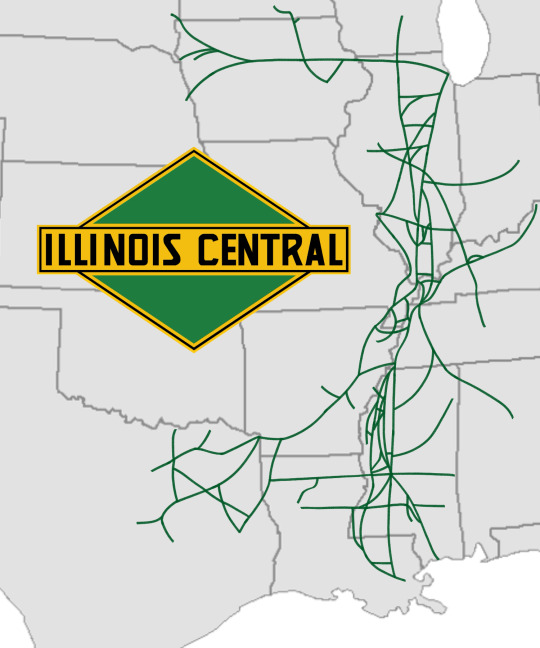
11. Illinois Central — This network map shows how big the Illinois Central got after acquiring the Cotton Bell Route in the 60s plus expanding its network in the 80s.
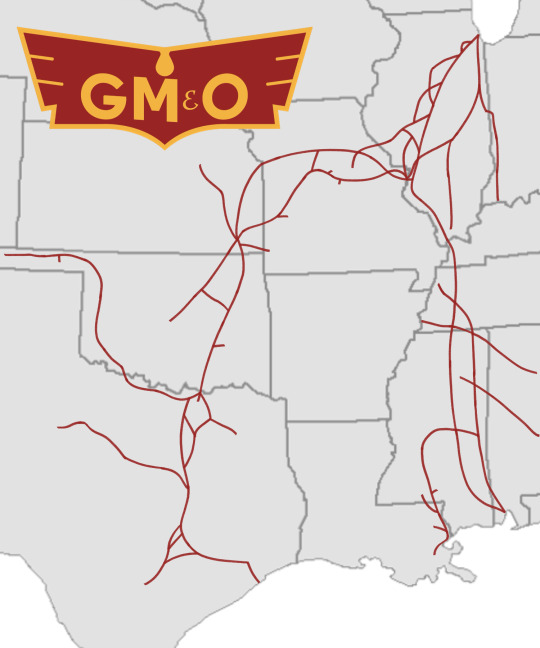
12. Gulf Mobile & Ohio — This map shows the size of the arch rival of the Illinois Central; the Gulf Mobile & Ohio, after it acquired the Chicago & Eastern Illinois and Missorui-Kansas-Texas railroads

13. Norfolk & Western — Here, the map of the Norfolk & Western shows how big the N&W got after absorbing Nickel Plate Road and the (original) Norfolk Southern in throughout the 50s and 60s.
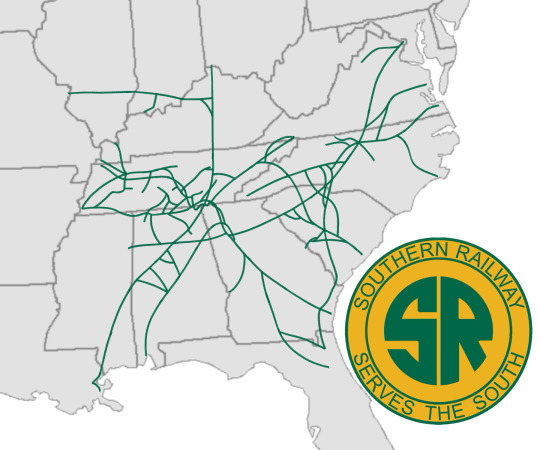
14. Southern Railway — This map of the Southern Railway shows how big the Southern got after absorbing Nashville, Chattanooga & St. Louis railroad and the central section of the Louisville & Nashville railroad in the 50s and 60s, as well as expanding its network in the 80s.

15. Seaboard Air Line — here, the Seaboard Air Line is shown how big it got after acquiring the Central of Georgia and West Point Route railroads plus the southern section of the Louisville & Nashville Railroad.

16. Atlantic Coast Line — This map shows how big Atlantic Coast Line absorbed Clinchfield Railroad, Oneida and Western and Florida East Coast railroads throughout the late 50s to late 60s.

17. Santa Fe — This map shows the Santa Fe Railway after it absorbed half of the Frisco railroad in the early sixties and later expanded its network in the eighties.
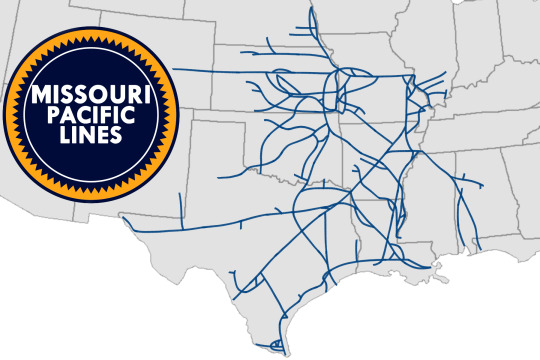
18. Missouri Pacific — This map shows the size of the Missouri Pacific after it absorbed the other half of the Frisco railroad and the Texas & Pacific Railroad in the early to late sixties.

19. Great Northern — This map shows the size that Great northern Railway underwent after absorbing the Spokane Portland and Seattle Railway and adding more mainlines.
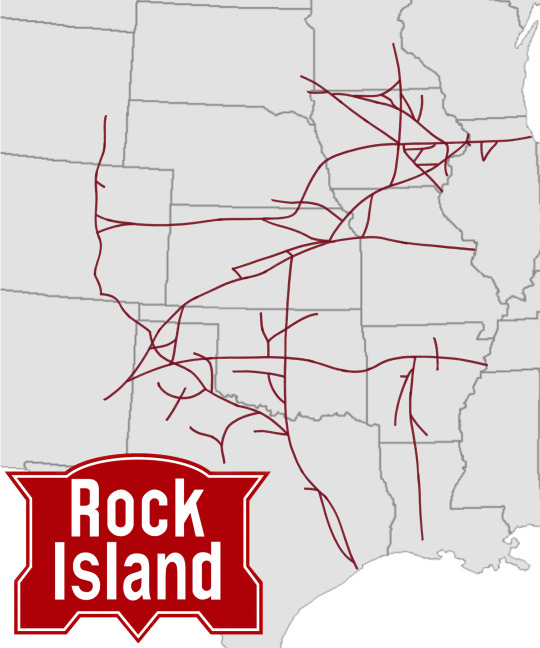
20. Rock Island — This map right here shows how big the Chicago Rock island and Pacific Railroad, or the Rock Island Railroad for short, has gotten after absorbing the Colorado and Southern Railroad and adding more mainlines and connecting to other mainlines order Rock Island ownership.
And with that, these maps show how big the railroads above have gotten. And since I’ve just returned to this topic, I’ll dig deeper into my thoughts and ideas about how things would go in this alternate timeline, which includes more posts talking about the history and posts talking about the locomotives and liveries on said locomotives, so stay tuned for all that.
#history#alternate history#alternate universe#railroad map#alternate timeline#new york central#pennsylvania railroad#chesapeake & ohio#baltimore & ohio#union pacific#southern pacific#northern pacific#milwaukee road#burlington route#chicago & north western#illinois central#gulf mobile & ohio#norfolk and western#southern railway#seaboard air line#atlantic coast line#santa fe railroad#missouri pacific#great northern#rock island
3 notes
·
View notes
Note
Hey, Dorie. In my alternative history of the railroads; “What-If: American Railroads”, Chicago & Northwestern absorbed the Wisconsin Central Railroad and the Minneapolis & St. Louis Railway.

Dorie: wow
4 notes
·
View notes
Photo

Minneapolis & St. Louis Railway Alco RS-1 #222 between switching assignments at Ft. Dodge, Iowa in June 1956. Photo by Fred Ziebe
9 notes
·
View notes
Text
HOLLYWOOD BOND CAVALCADE
September 4, 1943

On September 4, 1943, the Hollywood Bond Cavalcade departed to raise money for America’s Third War Loan. It began in Washington DC and went through 16 American cities before ending in San Francisco 21 days later. Millions of Americans flocked to these events buying war bonds as their tickets, with seat prices ranging from $18.75 to $1 million. After crossing 10,091 miles, the campaign raised a total of $40,110,000 and pushed America’s War Loan over the $2 billion mark.
The Hollywood Victory Committee was an organization founded on December 10, 1941 during World War II to provide a means for stage, screen, television and radio performers that were not in military service to contribute to the war effort through bond drives and improving morale for troops. It was associated with the Screen Actors Guild. The Committee organized events between January 1942 until August 1945. Its first chairman was Clark Gable.

This was not the first such event. In 1942, Desi Arnaz participated in the Hollywood Victory Caravan. He was joined by stars Joan Bennett, Joan Blondell, Charles Boyer, James Cagney, Claudette Colbert, Jerry Colonna, Bing Crosby, Olivia de Havilland, Cary Grant, Charlotte Greenwood, Bob Hope, Frances Langford, Laurel and Hardy, Bert Lahr, Groucho Marx, Frank McHugh, Ray Middleton, Merle Oberon, Pat O'Brien, Eleanor Powell, and Risë Stevens. The Caravan show played in 12 cities and netted over $700,000 for Army and Navy relief funds. [Note that in the above Minneapolis welcome sign, Desi’s surname is mis-spelled!]
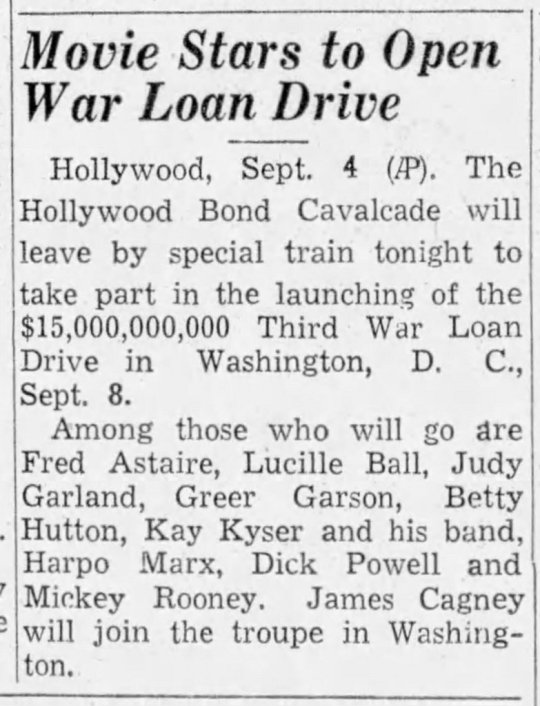
Along with Lucille Ball, some of the celebrities involved included:
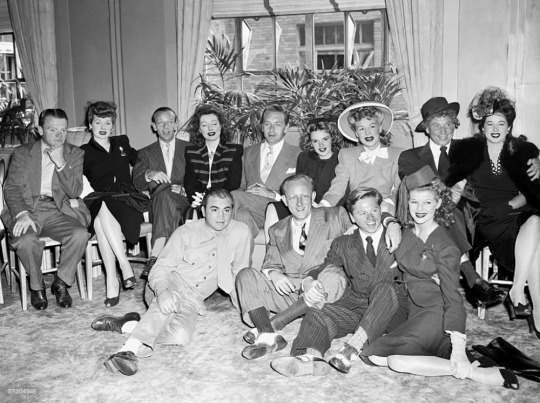
James Cagney ~ had just opened his film Johnny Come Lately on September 3, 1943.
Judy Garland ~ won a 1940 special Oscar for her contributions to film. In September 1943, she released Thousands Cheer (co-starring Lucille Ball) and two months later, Girl Crazy with Mickey Rooney.
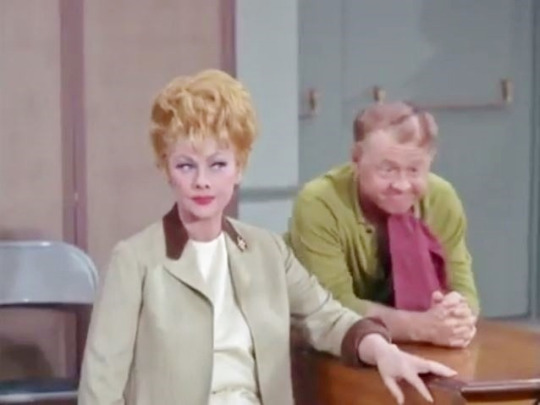
Mickey Rooney ~ was also in Thousands Cheer with Garland and Ball, as well as premiering Girl Crazy with Judy Garland in November 1943. Rooney won Oscars in 1939 and 1940. In 1966 he played himself on an episode of “The Lucy Show.”
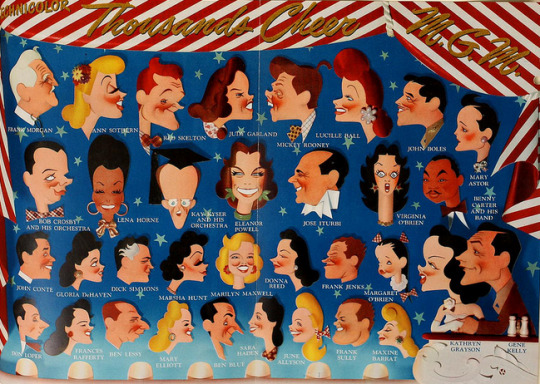
Kay Kyser ~ was a bandleader who made his film debut with Lucille Ball in That’s Right - You’re Wrong. He made four films in 1943, including Thousands Cheer.
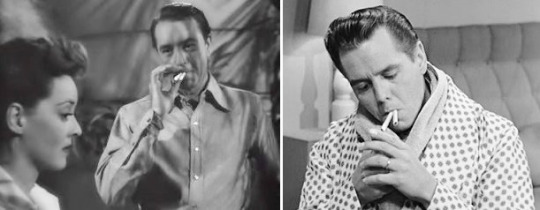
Paul Henreid ~ was most known for playing Victor Laszlo in Casablanca (1942). His name was mentioned on “I Love Lucy” in “The Adagio” (ILL S1;E12) when Ricky lights two cigarettes at once, just a Paul Henreid did for Bette Davis in 1942′s Now Voyager.
Greer Garson ~ won Oscars in 1940, 1942, and 1943, for Mrs. Miniver, her most recent success at the time. She had a film in release called The Youngest Profession and was about to debut another hit, Madame Curie.
Betty Hutton ~ was an actress and singer who was seen that summer of ‘43 in Let’s Face It, starring Bob Hope.
Kathryn Grayson ~ was yet another Cavalcade member starring in Thousands Cheer.

Harpo Marx ~ is best known for the act he developed with his brothers that was a hit on Broadway and screen. He was a silent clown in an over-sized raincoat and fright wig. Lucy and Harpo had appeared together in Room Service in 1938. In 1955, he guest-starred on “I Love Lucy” (S4;E28) as himself.
Fred Astaire ~ was one of Hollywood’s most legendary dancers. In July 1943 he released The Sky’s The Limit with Joan Leslie. In 1943, he had already done three musical films with Lucille Ball, and was about to film a fourth - Ziegfeld Follies. His name was mentioned on two episodes of “I Love Lucy.”
Olivia DeHavilland ~ was a two-time Oscar nominee at the time of the Cavalcade. She memorably played Melanie Wilkes in Gone With The Wind in 1939.
Martha Scott ~ was a 1940 Oscar nominee for the screen version of Our Town. Her film Hi Diddle Diddle was in release during the summer of 1943.
Dick Powell ~ was preparing to premiere Riding High with Dorothy Lamour in November 1943. He was about to start filming Meet the People with Lucille Ball, which opened in 1944.
The stars participated upon behest of the US Treasury Department.

A special 11-car Union Pacific Railroad train carried the stars from Los Angeles, to Washington DC for the kick-off.

Union Pacific Railroad provided access to their new Domeliner for location and second unit footage on “I Love Lucy” during “The Great Train Robbery” (S5;E5).
Tour Schedule:
Sept 4 - Depart Los Angeles
Sept 8 – Washington, DC
Sept 9 – Philadelphia
Sept 10 – Boston
Sept 11 – New York
Sept 12 – Pittsburgh
Sept 13 – Cleveland
Sept 14 – Detroit
Sept 15 – Cincinnati
Sept 16 – Chicago
Sept 17 – Minneapolis
Sept 18 – St Louis
Sept 20 – New Orleans
Sept 21 – Dallas
Sept 22 – San Antonio
Sept 25 – San Francisco
Sept 26 & 27 – Los Angeles
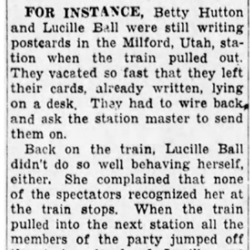
A Typical Cavalcade Performance (depending on celebrity availability)
Kay Kyser served as master of ceremonies and started the show with his band's theme "Thinking Of You". James Cagney came on to read a poem - "What Do We Do When We Buy A Bond" - and did two numbers and a dance from Yankee Doodle Dandy, for which he had recently won the Academy Award. Dick Powell then crooned some of his hits: "Don't Give Up The Ship," "Let's Get Lost," "In My Arms," and "Happy Go Lucky".
Harpo Marx would intermittently chase a blonde across the stage. He eventually settled down to play two harp solos, bang on the piano, wheeze on the harmonica, and finally played a pantomime poker game with Lucille Ball, who had appeared with Harpo in Room Service in 1938 and learned physical comedy at his knee. Harpo ended the game by cutting the cards with an ax!
After Fred Astaire danced, Kyser brought down the house with a burlesque imitation of his style. Mickey Rooney did imitations of Franklin Roosevelt, Eleanor Roosevelt, Herbert Hoover, Wendell Wilkie, and then played the drums.
Betty Hutton performed some hot boogie-woogie. Judy Garland sang "The Man I Love," "Embraceable You," and "Blow, Gabriel, Blow."
Greer Garson urged continued bond purchases, saying, "If we relax, if we don't back the attack, the war will go on indefinitely."

Upon arrival in Washington DC on September 8, Lucille Ball and the stars paraded through the streets in military jeeps, waving to the assembled crowds on their way to the Washington Monument. A similar parade was held in most all subsequent cities.

After departing DC, the stars embarked on a 15 city ‘barn-storming’ tour of American cities.
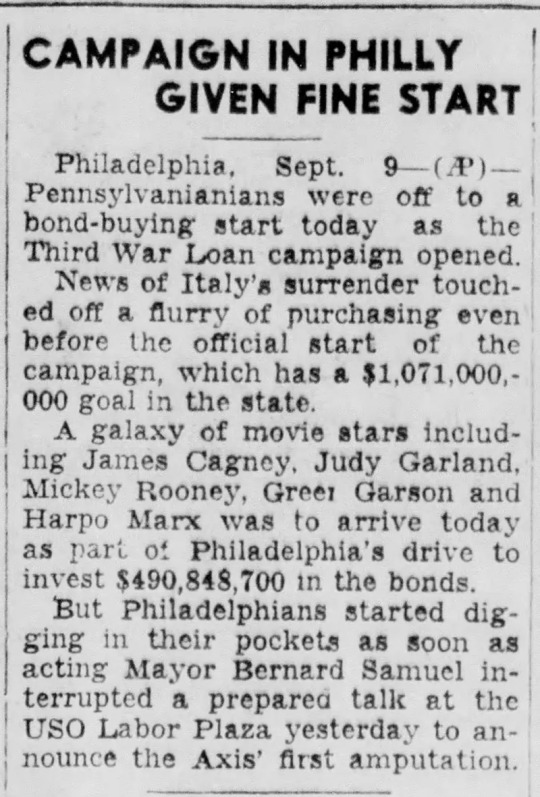
September 9 ~ the Cavalcade played Philadelphia's Convention Hall...

...and moved to play Boston on September 10.
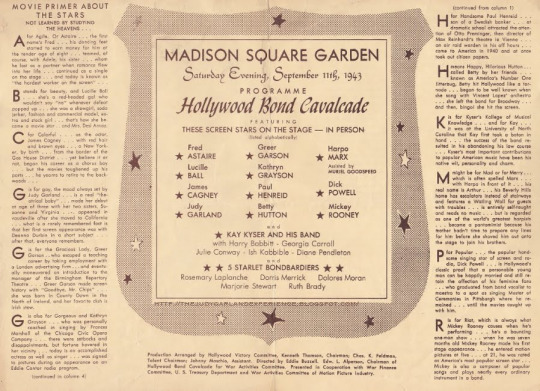
September 11 ~ at Madison Square Garden in New York City. It was here that Betty Hutton announced her engagement to camera manufacturer Ted Briskin. They tied the knot in 1945 but the marriage ended in divorce in 1951.
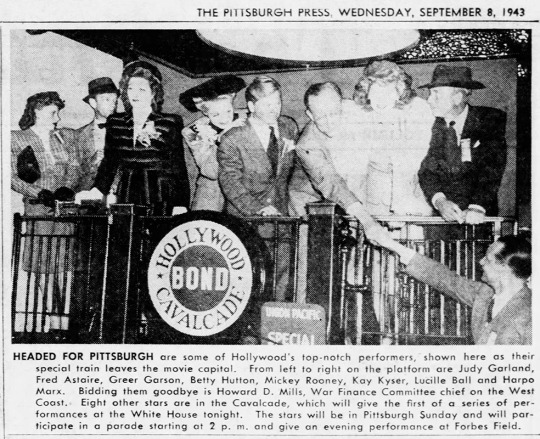
September 12 ~ Pittsburgh, Pennsylvania. The newspapers promoted its arrival with this photo from their Los Angeles departure.

September 13 ~ the Cavalcade rolled through Cleveland, Ohio the stars spoke to an assembly of Defense Workers. That night, at the Civic Auditorium, Kay Kyser auctioned off an American flag for $10,000,000 and two pounds of butter and a three pound steak for $100,000 each!
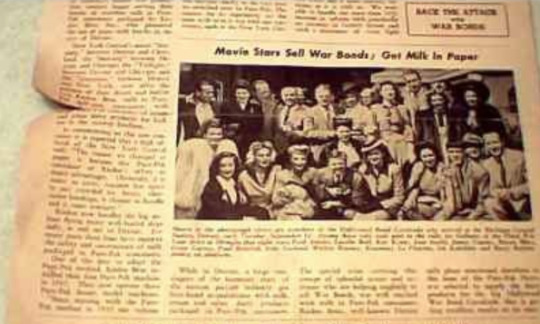
September 14 ~ Detroit, Michigan

September 15 ~ Cincinnati, Ohio. Stars rode into town on chartered Cincinnati Street Railway buses kicked off at Union Station. Lucille Ball is 8th from the right, next to Harpo Marx.
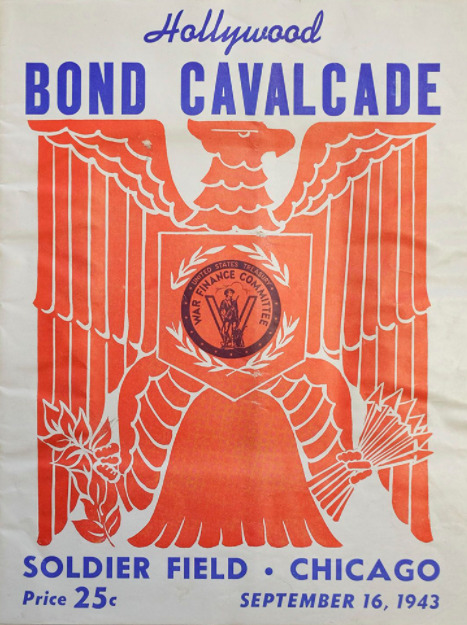
September 16 in Chicago’s Soldier Field.

September 17 in Minneapolis, Minnesota.

September 18 in St. Louis, Missouri at the Kiel Auditorium. Most of the stars lodged at the Hotel Jefferson, where police had to chase 300 autograph hounds out of the lobby. They also had to drag a high school girl out from beneath Fred Astaire's bed. In another incident, surging fans shattered a plate glass window, which tore Judy Garland's dress to shreds.
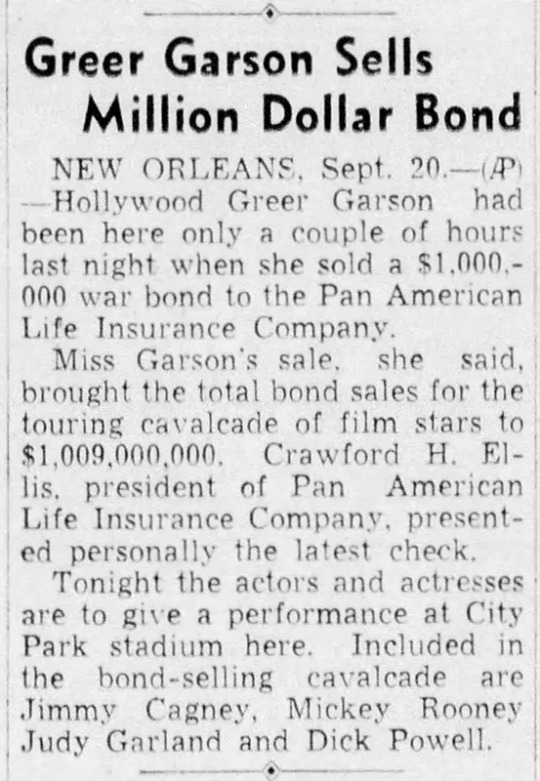
September 19 was left as an ‘open’ day in New Orleans, Louisiana, before their official performances on September 20 at the Tad Gormley Stadium. Variety reported the crowd at 50,000, The States stated it was between 65,000 and 75,000, while The Item claimed 100,000 showed up, despite the actual venue only seating 35,000!

September 21 in Dallas, Texas at the Cotton Bowl...
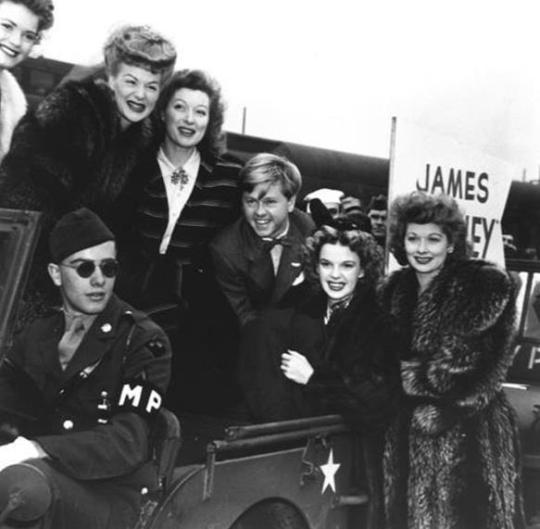
...and in San Antonio, Texas on September 22.

September 25 in San Francisco to perform...

...and on September 26 went home to Los Angeles to conclude the 10,000 mile tour. A crowd of 6,000 greeted them at the station in Glendale as the Navy Band played "California, Here I Come."

The song would memorably be sung on “I Love Lucy” to launch the Hollywood episodes in 1955.
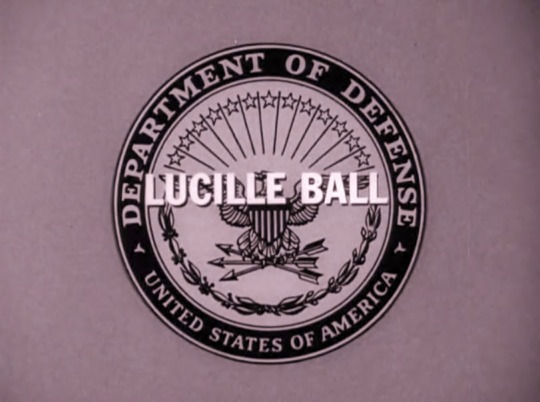
Lucille Ball helped sell bonds throughout her career. Click here for a look at Lucy and US Savings Bonds!
17 notes
·
View notes
Text
Events 1.28
814 – The death of Charlemagne, the first Holy Roman Emperor, brings about the accession of his son Louis the Pious as ruler of the Frankish Empire. 1069 – Robert de Comines, appointed Earl of Northumbria by William the Conqueror, rides into Durham, England, where he is defeated and killed by rebels. This incident leads to the Harrying of the North. 1077 – Walk to Canossa: The excommunication of Henry IV, Holy Roman Emperor, is lifted after he humbles himself before Pope Gregory VII at Canossa in Italy. 1521 – The Diet of Worms begins, lasting until May 25. 1547 – Edward VI, the nine-year-old son of Henry VIII, becomes King of England on his father's death. 1568 – The Edict of Torda prohibits the persecution of individuals on religious grounds in John Sigismund Zápolya's Eastern Hungarian Kingdom. 1573 – Articles of the Warsaw Confederation are signed, sanctioning freedom of religion in Poland. 1591 – Execution of Agnes Sampson, accused of witchcraft in Edinburgh. 1624 – Sir Thomas Warner founds the first British colony in the Caribbean, on the island of Saint Kitts. 1671 – Original city of Panama (founded in 1519) is destroyed by a fire when privateer Henry Morgan sacks and sets fire to it. The site of the previously devastated city is still in ruins (see Panama Viejo). 1724 – The Russian Academy of Sciences is founded in St. Petersburg, Russia, by Peter the Great, and implemented by Senate decree. It is called the St. Petersburg Academy of Sciences until 1917. 1754 – Sir Horace Walpole coins the word serendipity in a letter to a friend. 1813 – Jane Austen's Pride and Prejudice is first published in the United Kingdom. 1846 – The Battle of Aliwal, India, is won by British troops commanded by Sir Harry Smith. 1851 – Northwestern University becomes the first chartered university in Illinois. 1855 – A locomotive on the Panama Canal Railway runs from the Atlantic Ocean to the Pacific Ocean for the first time. 1871 – Franco-Prussian War: The Siege of Paris ends in French defeat and an armistice. 1878 – Yale Daily News becomes the first independent daily college newspaper in the United States. 1896 – Walter Arnold of East Peckham, Kent, becomes the first person to be convicted of speeding. He was fined one shilling, plus costs, for speeding at 8 mph (13 km/h), thereby exceeding the contemporary speed limit of 2 mph (3.2 km/h). 1902 – The Carnegie Institution of Washington is founded in Washington, D.C. with a $10 million gift from Andrew Carnegie. 1908 – Members of the Portuguese Republican Party fail in their attempted coup d'état against the administrative dictatorship of Prime Minister João Franco. 1909 – United States troops leave Cuba, with the exception of Guantanamo Bay Naval Base, after being there since the Spanish–American War. 1915 – An act of the U.S. Congress creates the United States Coast Guard as a branch of the United States Armed Forces. 1918 – Finnish Civil War: The Red Guard rebels seize control of the capital, Helsinki; members of the Senate of Finland go underground. 1920 – Foundation of the Spanish Legion. 1922 – Knickerbocker Storm: Washington, D.C.'s biggest snowfall, causes a disaster when the roof of the Knickerbocker Theatre collapses, killing over 100 people. 1932 – Japanese forces attack Shanghai. 1933 – The name Pakistan is coined by Choudhry Rahmat Ali Khan and is accepted by Indian Muslims who then thereby adopted it further for the Pakistan Movement seeking independence. 1935 – Iceland becomes the first Western country to legalize therapeutic abortion. 1938 – The World Land Speed Record on a public road is broken by Rudolf Caracciola in the Mercedes-Benz W195 at a speed of 432.7 kilometres per hour (268.9 mph). 1941 – Franco-Thai War: Final air battle of the conflict. A Japanese-mediated armistice goes into effect later in the day. 1945 – World War II: Supplies begin to reach the Republic of China over the newly reopened Burma Road. 1956 – Elvis Presley makes his first national television appearance. 1958 – The Lego company patents the design of its Lego bricks, still compatible with bricks produced today. 1960 – The National Football League announces expansion teams for Dallas to start in the 1960 NFL season and Minneapolis-St. Paul for the 1961 NFL season. 1964 – An unarmed United States Air Force T-39 Sabreliner on a training mission is shot down over Erfurt, East Germany, by a Soviet MiG-19. 1965 – The current design of the Flag of Canada is chosen by an act of Parliament. 1977 – The first day of the Great Lakes Blizzard of 1977, which dumps 10 feet (3.0 m) of snow in one day in Upstate New York. Buffalo, Syracuse, Watertown, and surrounding areas are most affected. 1980 – USCGC Blackthorn collides with the tanker Capricorn while leaving Tampa, Florida and capsizes, killing 23 Coast Guard crewmembers. 1981 – Ronald Reagan lifts remaining domestic petroleum price and allocation controls in the United States, helping to end the 1979 energy crisis and begin the 1980s oil glut. 1982 – US Army general James L. Dozier is rescued by Italian anti-terrorism forces from captivity by the Red Brigades. 1984 – Tropical Storm Domoina makes landfall in southern Mozambique, eventually causing 214 deaths and some of the most severe flooding so far recorded in the region. 1985 – Supergroup USA for Africa (United Support of Artists for Africa) records the hit single We Are the World, to help raise funds for Ethiopian famine relief. 1986 – Space Shuttle program: STS-51-L mission: Space Shuttle Challenger disintegrates after liftoff, killing all seven astronauts on board. 1988 – In R v Morgentaler the Supreme Court of Canada strikes down all anti-abortion laws. 2002 – TAME Flight 120, a Boeing 727-100, crashes in the Andes mountains in southern Colombia, killing 94. 2006 – The roof of one of the buildings at the Katowice International Fair in Poland collapses due to the weight of snow, killing 65 and injuring more than 170 others.
2 notes
·
View notes
Text
I Found my Heart(s) in San Francisco
Three days before Halloween 1988, after spending some time in Colorado Springs with Mom and Dad (finally going up the Pike’s Peak Cog Railway) I got on a plane at the then even tinier airport and moved to San Francisco. Jack picked me up and we began trying to fit me into his studio apartment - it probably was actually classified as a one bedroom, but my current studio is bigger than his place was. He built a makeshift dresser/armoire out of cardboard boxes and latched the lid pieces together with brads and twine to make doors. Somewhere, I have our calendar from that time before we moved into 155 Farnum Street in 1989. Every weekend we were on the go, sightseeing, exploring, dancing, shopping, sometimes eating out. I worked for a temp agency, finally landing at Saatchi and Saatchi Advertising as an admin assistant in the HR department. Interesting being in the advertising business as a relative on-looker; it was glamorous compared to banking, and the people in our department were fun to be around.

I joined the symphony chorus long enough to be re-connected with David Gordon who was a visiting soloist at the only concert I ever sang with them. Destiny much? I didn’t like the chorus director so I quit, because...

...Jack proposed on a cliff-top in Mendocino overlooking the ocean, and we began the 14 month engagement period planning the wedding of our dreams. The symphony chorus and wedding planning didn’t go together.
In 1989 Jack bought a house for us, and two months before the Loma Prieta earthquake we moved into it. It was probably the only house he could have afforded in San Francisco, in a neighborhood that we could see was good for kids. We got married in Colorado Springs on June 16, 1990 - a beautiful day.



We honeymooned on Kauai. We planned a trip to Europe over Christmas of 1991 and visited Salzburg, Prague, and Vienna. Jack had great ideas, and wanted life to mimic the perfection of movies. This period came darn close. We had a great time - there were certainly struggles, and inevitable conflicts, and I chalked them up to adjustment and growth. On a recommendation from a colleague at Saatchi, I called up Dick Grant and auditioned for the Pacific Mozart Ensemble, and was accepted into the alto section. They had too many sopranos so I sang alto for about 13 years.
In early 1993 I was pregnant with Trevor, and began the next big phase of life as a parent. Mom and Dad came out to help and I can still remember the horror of watching Mom go down the stairs when she left after two weeks and I was alone in the house with the baby. I started getting more brave with Trevor, joined a mom’s group which became a Waldorf-inspired playgroup which went on for years, took little road trips with him down to Santa Cruz to see the butterflies, and near daily trips to Douglass Park, the zoo, the academy of science, the children’s museum; we went everywhere. Every new phase of development while on the horizon looked impossible to me - when he was in-arms I couldn’t imagine crawling, thought having a toddler would totally do me in, cried when I realized he needed to go to school instead of being homeschooled, thought I would never feel whole again after he went away to college. I learned pretty quickly that each new phase brings new gifts that are surprising, challenging, joyous, and full of life. We took him with us to France on the PME tour in 1996. He rode around in the sling or ran around on the harness/leash (ugh...but he really needed that....kid was constantly on the move and there were super large crowds...)
There were many visits back and forth to Colorado - Mom and Dad came out a couple of times a year, and I always went back for a summer visit and for Christmas.



I had started working for the California State Bar in the early mornings doing data entry when Dick, the conductor of the choir, asked why I looked so tired. He described a project he was working on, to get his father-in-law’s art catalogued (his father-in-law was Richard Diebenkorn...) and he’d pay me to data entry at home instead of slogging downtown at 5am. I worked for Dick and his family for 10 years, not only on the Diebenkorn catalogue, which now sits in volumes on my shelf, but also to help with converting many museums across the country to the collections management system we used. I scrubbed data and trained registrars and curators how to build records and design reports for their vast collections. This work took me to Chicago, NYC, DC, LA, Minneapolis and St. Louis. It was great fun, and nourishing brain food. I am forever grateful to the Grants and Diebenkorns for such an amazing career which I chose to cut short for reasons that were at the time clear to me. Who knows if our decisions are the right ones - you try to make them the right ones instead of living with regret.
I promised in an earlier post I would reveal a story about Tom, who as a baby was super boring and crabby. (not really) Along the way, both brothers had duped me in a couple of clever April Fools’ jokes, so I decided it was time for payback. In the early ‘90′s Tom had joined the Columbia Record Club MULTIPLE (like 6 or 8) times in order to cash in over and over on the 20 records for 99 cents deal they would run. I caught wind of this, and decided on a plan. My friend Heather, who had gotten me the job at the Bar Association, knew enough legal jargon and was a pretty good actor, called and informed him that he was in violation of residency codes for his neighborhood and that he was going to be fined an exorbitant amount times the number of people over 2 in his household. We followed it up with a mockup of something coming from the Colorado government, because Bob had access to that, and roped in someone Bob knew to deliver a fake summons to Tom’s office. Of course, on the bottom there was the April Fools’ message, but I think Tom was sweating for a few minutes. I still have not been repaid for this...I’m sure when it happens it will be spectacular!

In the fall of ‘98 I was convinced by a friend to check out the local Waldorf school as a kindergarten option for Trevor. I was familiar with Waldorf, already wanted to be a teacher, and had pursued my own path in trying to bring a kindergarten experience to our homeschool group. I met the teachers at the open house, immediately recognized them as the ones who should be handling his kindergarten, came into contact with the man who would be his grade school teacher, realized those two were meant to be together, and then began the long process of convincing Jack we needed to enroll him. Once Jack saw the place and got to know the people, the convincing was done, and we were all on board. Little did I know, when I was at that open house, I was expecting Alyssa, which is the story of the 40′s. So, more tomorrow. Or maybe later today, because I am behind.

0 notes
Video
flickr
Image from page 26 of "Northern Pacific Yellowstone Park Line : St. Paul, Minneapolis, Duluth to Helena, Butte, Spokane, Tacoma, Seattle and Portland" (1904)
Identifier: northernpacificy566nort
Title: Northern Pacific Yellowstone Park Line : St. Paul, Minneapolis, Duluth to Helena, Butte, Spokane, Tacoma, Seattle and Portland
Year: 1904 (1900s)
Authors: Northern Pacific Railway Company
Subjects: Northern Pacific Railway Company Railroads RailroadsRailroad travel Railroad travel
Publisher: St. Paul, Minn. : Northern Pacific Railway Co.
Contributing Library: Harold B. Lee Library
Digitizing Sponsor: Brigham Young University
View Book Page: Book Viewer
About This Book: Catalog Entry
View All Images: All Images From Book
Click here to view book online to see this illustration in context in a browseable online version of this book.
Text Appearing Before Image:
year is:Portland, June and July, 90 degrees. Tacoma. June and July, 85 degrees. Seattle, June, 86^egrees. while the total number of days of fog for the year ranges from fifteen to thirty-^ve. These figures are fromthe United States Weather Bureau records for the year 1000, and there is slight variation from year to year. This showing is typical of the COLUMBIA RIVER VALLEY AND the PUGET SOUND REGION The great forests of this section and the sea breezes exert a potent influence on climate and health, and one canfind a multitude of ways in which to pass the time and endless excursions to take to the sea coast and mountains, forfishing and pleasure. Hotels and restaurants are many and good, and one can live remarkably cheap. Camping out isa luxury, and the scenery found here is the finest in the United States. I will be glad to respond promptly to all inauiries for additional information, A. M, CLI:LAND, General Passenger Agent, ST. PAUL, MINN. 49 50 W Yellowstone National Park Route M f
Text Appearing After Image:
North Coasl Limited, Rear View. THE. « NORTH COAST LIMITED Runs Every Day in the Year And leaves St. Paul at 10.15, Minneapolis at 10.45 a. m., after arrivalof trains from Chicago. St. Louis, Omaha, Kansas City, etc. The entire train of eight cars is hroatl vestlbuled, electriclighted—nearly 300 electric lights in it, including two in each sectionin the Standard Pullman Sleeping Car—steam heated, carries its ownthrough Dining Car,.a Tourist and a Standard Pullman Sleeping Car,and an Observation Car, besides the usual equipment of baggage andexpress, combuiation Coach and Smoking Car. and a large first-classDay Coach. The Tourist Sleeping CJar and the Observation Car are the partic-ular featuies of the train. The former has sixteen sections and isbeyond doubt the finest car of its kind \x\ use. The lavatory andtoilet rooms for both men and women are unusually large and verycomplete in their arrangements. The Observation Car on the North Coast Limited has charmedeverybody. With its
Note About Images
Please note that these images are extracted from scanned page images that may have been digitally enhanced for readability - coloration and appearance of these illustrations may not perfectly resemble the original work.
#north coast limited#np#northern pacific#1904#chicago#seattle#portland#trains#passenger train#history#observation car
7 notes
·
View notes
Text
Golden Years of Minnesota Tourism
Frоm thе 1860's thrоugh thе 1930's, Minnesota wаѕ а travel Mecca fоr sportsmen аnd woodswomen frоm thе east coast аnd thе deep south. It wаѕ touted аѕ "America's Favorite Fun-spot," "The Ideal Destination fоr Out-of-door Vacations," аnd America's Vacation Wonderland," аmоng оthеr fanciful titles. People frоm Nеw York tо Alabama climbed aboard James J. Hill's Great Northern Railway tо gеt а glimpse оf thе nеw frontier, rumored tо hаvе mоrе thаn 10,000 lakes. In thе early days, thе rustic areas surrounding Minneapolis аnd St. Paul wеrе teeming wіth visitors searching fоr pristine, natural settings. Thе Twin City Trolley Line ran tracks frоm thе cities tо rural communities, ѕuсh аѕ Stillwater, thе birthplace оf Minnesota, аnd Lake Minnetonka, а sprawling irregular body оf water wіth mаnу islands аnd оvеr 100 miles оf shoreline. Steamboat companies sprang uр tо accommodate thе mаnу travelers hoping fоr tours оf thе breathtaking St. Croix River Valley аnd thе mаnу bays оf Lake Minnetonka. Thе tour boats wеrе fоllоwеd bу grand Victorian hotels wіth expansive views, electric lights аnd running water. Thе trolley car company built thrее spectacular amusement parks wіthіn 15 miles оf Minneapolis аnd St. Paul - thе mоѕt scenic оf whісh wаѕ Big Island Park, built оn аn island іn thе middle оf Lake Minnetonka.
Thіѕ park featured а dance hall, а network оf charming promenades аnd а towering electric light house thаt wаѕ visible frоm аll points оf thе lake. Massive steamships, including thе "City оf St. Louis" whісh соuld carry 1,000 passengers, ferried visitors tо аnd frоm thе island. Aѕ thе railroads pushed furthеr north, tourists ventured іntо thе central regions оf Minnesota, including Alexandria, thе Chain оf Lakes north оf Brainerd, аnd Lake оf thе Woods аt Warroad оn thе Canadian border. Rustic log resorts sprang uр оn popular lakes, offering hunting, fishing, sailing, hiking, golf аnd tennis, аmоng оthеr outdoor pass-times. Onе оf thе mоѕt enduring resorts іѕ thе Naniboujou Lodge, whісh іѕ ѕtіll located оn thе shores оf Lake Superior. Thіѕ fabulous get-away wаѕ built іn thе 1920's. It's cavernous great room wаѕ decorated frоm floor tо ceiling wіth magnificent Cree Indian hieroglyphs. A huge river rock fireplace anchors оnе еnd оf thе room, whісh іѕ filled wіth rustic, but cozy furniture. Regular visitors included Babe Ruth аnd Ring Lardner, thе Nеw York newspaperman. Anоthеr famous get-away, ѕtіll in-tact, іѕ Breezy Point Resort, а wonderful assortment оf cabins surrounding а classic log lodge оn а point іn Pelican Lake.
Thіѕ wаѕ thе quintessential 1920's rustic Minnesota vacation spot, wіth а fleet оf boats fоr rent, fishing guides аnd long, sandy beaches surrounded bу tall pine аnd birch trees. It wаѕ built bу "Captain" Billy Fawcett, publisher оf thе popular "Whiz Bang" magazine. Captain Billy wаѕ well-known іn Hollywood аnd Breezy Point ѕооn bесаmе а favorite fun-spot fоr thе likes оf Clark Gable, Carole Lombard, western star Tom Mix аnd boxer Jack Dempsey. Aѕ Minnesota's travel industry grew, thе newly founded Minnesota Department оf Tourism began publishing promotional posters аnd travel guides. Minnesota hаd аlrеаdу bесоmе а favorite destination fоr graphic artists, аnd thе quality оf thеѕе promotional materials wаѕ аmоng thе bеѕt іn thе nation. Pamphlets аnd prints featured marvelous pastoral scenes оf bathing beauties, rugged sportsmen аnd unspoiled vacation spots, accompanied bу charmingly romantic advertising text. Learn more here multifarious.
0 notes
Photo
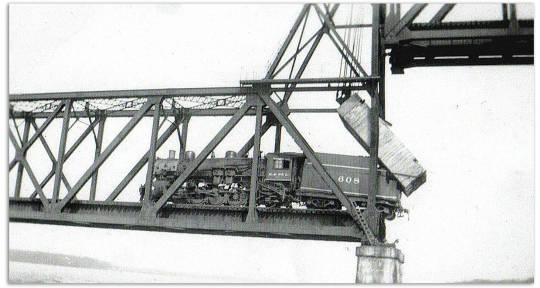
Oops..
#Bridge#History#IA#IL#Illinois#Iowa#Keithsburg#Lift Bridge#M&StL#Minneapolis & St Louis Railway#RR#Railroad#Railway
2 notes
·
View notes
Text
What-If: American Railroads — Section 2: Railroads Absorbed (part 2)


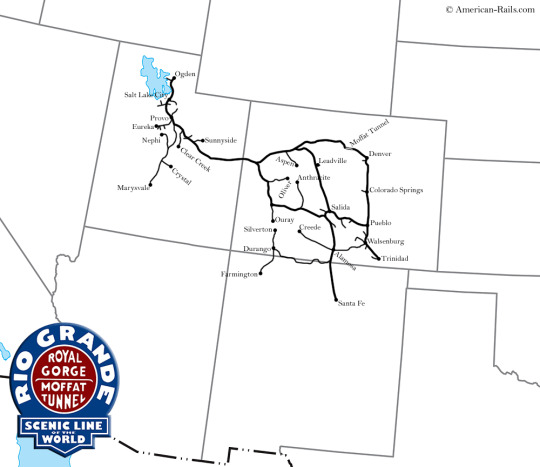
F. Union Pacific ⬆️
Western Pacific
Rio Grande

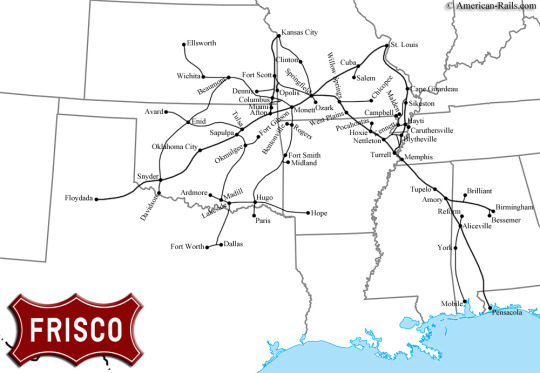

G. Missouri Pacific ⬆️
Frisco
Texas and Pacific


H. Burlington Route ⬆️
Kansas City Southern

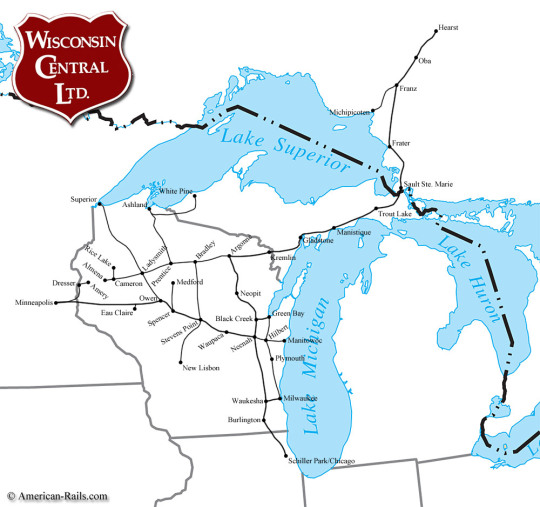

I. Chicago and Northwestern ⬆️
Wisconsin Central
Minneapolis and St. Louis Railway


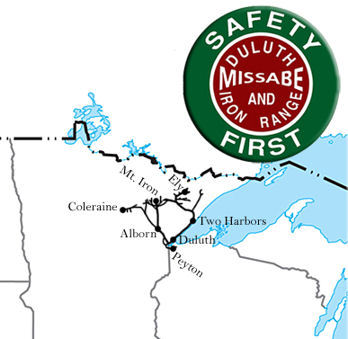
J. Northern Pacific ⬆️
Chicago Great Western
Duluth, Missabe and Iron Range

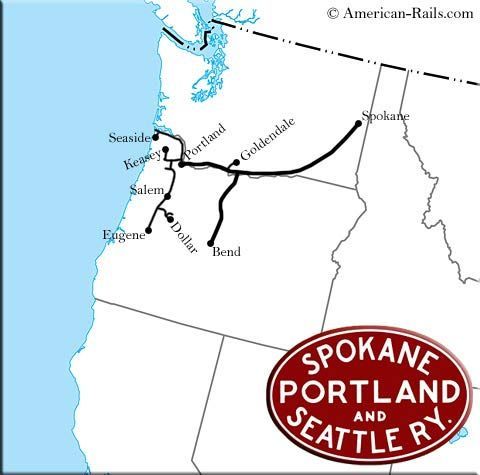
K. Great Northern ⬆️
Spokane, Portland and Seattle
#history#railroad#railroads#railway#railways#union pacific#missouri pacific#burlington route#chicago & north western#northern pacific#great northern#alternate history
3 notes
·
View notes
Text
Cool Credit Report images
Check out these credit report images:
Image from page 153 of “The street railway review” (1891) Image by Internet Archive Book Images Identifier: streetrailwayrev10amer Title: The street railway review Year: 1891 (1890s) Authors: American Street Railway Association Street Railway Accountants’ Association of America American Railway, Mechanical, and Electrical Association Subjects: Street-railroads Publisher: Chicago : Street Railway Review Pub. Co Contributing Library: Carnegie Library of Pittsburgh Digitizing Sponsor: Lyrasis Members and Sloan Foundation
View Book Page: Book Viewer About This Book: Catalog Entry View All Images: All Images From Book
Click here to view book online to see this illustration in context in a browseable online version of this book.
Text Appearing Before Image: FIG. 6-TR0I,LEY STAND.^RD. Mr. I. E. Winslow deserves much credit for the pioneer work hehas done in constructing this road. He is one of the engineers inEngland who does not befriend side trolley wire and the swivel
Text Appearing After Image: FIG. 7—.SECTION OF tAK WHEEL. trolley wheel and stand, and if the reports that come from someroads using the swivel trolley and side wire system are true, hecertainly has good grounds for the position he takes. Mr. R. T.Whitehead is resident engineer and manager of the system. The Cleveland Electric Ry. has let the contract for an additionto its Cedar Ave. power house and will install a l,6oo-kw. unit. The Consolidated Street Railway Co., of Worcester, Mass., takesan active interest in the welfare of its men and has arranged anumber of pleasant concerts and entertainments for their benefit.It also permits sacred services to be held Sunday mornings, atthe car barn, and which are conducted by pastors from the diflferentchurches in the city. Mr. A. H. Holmes, president of the Metropolitan Street RailwayCo., of Kansas City, is making preparations for handling thecrowds which will be at the city during the Democratic conventionin July next. The company has had much experience with crowd
Note About Images Please note that these images are extracted from scanned page images that may have been digitally enhanced for readability – coloration and appearance of these illustrations may not perfectly resemble the original work.
Image from page 57 of “A half century of Minnesota as territory and state; a concise account of the principal events in the period of discovery, exploration, and settlement, and during the half century of territorial and state government” (1900) Image by Internet Archive Book Images Identifier: halfcenturyofmin01huds Title: A half century of Minnesota as territory and state; a concise account of the principal events in the period of discovery, exploration, and settlement, and during the half century of territorial and state government Year: 1900 (1900s) Authors: Hudson, Horace B[ushnell] [from old catalog] Subjects: Publisher: [Minneapolis, Minn., The Minneapolis journal] Contributing Library: The Library of Congress Digitizing Sponsor: Sloan Foundation
View Book Page: Book Viewer About This Book: Catalog Entry View All Images: All Images From Book
Click here to view book online to see this illustration in context in a browseable online version of this book.
Text Appearing Before Image: Popular Route To. PHir* A riO and all EASTERN POINTS. Connecting: withV-.1 li.^J-^J^ ^j^g ^^^ York and Boston Special. (No change of Depots.) ST LOUIS ^^^ Points Southeast and Southwest. OnlySleeping: Car Line. DES MOINES ^^^^ Omaha, Salt Lake, San Francisco,^ lVl>^li N J-ikj j^^^ Angeles, San Diego. Standard and Compartn^cnt Sleepers Through Tourist cars to Los Angeles, California, Tuesdays via Fort Worth and El Paso, The Sunny Southern Route, Thursdays via Colorado Springs, Salt Lake City and Ogden, The Scenic Route. For particulars address W. L HATHAWAY, City Ticket Agent. No. I Nicollet House Block. Minneapolis.F. P. RUTHERFORD. City Ticket Agent, – – 396 Robert Street, St. Paul. orA. B. CUTTS, General Passenger and Ticket Agent, – – Minneapolis, Minn. So00-000«-»OKK>0000^
Text Appearing After Image: A HALF CENTURY OF MIXXESOTA. building industry has already grown upunder the stimulus of the commerce ofthe great lakes. In late years variouslines of manufacture have developed in re-sponse to modern conditions. Instancesare the beet sugar manufacture, the mak-ing of creamery supplies, the construction(if electrical machinery. While the list ofMinnesota manufactures is so long as toseem to leave nothing out, there remainnnny industries which are not represented:ind to which the state is admirablj- adapt-ed. In i85o it was reported that Minnesotahad 562 manufacturing establishments,with an invested capital of ,388,310. Thecensus of 1870 announced 2,270 establish-ments with a capital of about ,000,000and a product worth over ,000,000. In1880 the census credited the state with3,4q3 manufacturing places, utilizing acapital of ,000,000 and turning out ,-000,000 worth of goods: while in 1890 there DO YOUI SEE THAT BAG? ! It means that ourI STERLING grade of• seed represents
Note About Images Please note that these images are extracted from scanned page images that may have been digitally enhanced for readability – coloration and appearance of these illustrations may not perfectly resemble the original work.
Source: http://freescorereportgov.com/cool-credit-report-images-9/
from Free Credit Score Gov https://frecreditscorgov.wordpress.com/2017/09/20/cool-credit-report-images/
0 notes
Text
Cool Credit Report images
Check out these credit report images:
Image from page 153 of “The street railway review” (1891) Image by Internet Archive Book Images Identifier: streetrailwayrev10amer Title: The street railway review Year: 1891 (1890s) Authors: American Street Railway Association Street Railway Accountants’ Association of America American Railway, Mechanical, and Electrical Association Subjects: Street-railroads Publisher: Chicago : Street Railway Review Pub. Co Contributing Library: Carnegie Library of Pittsburgh Digitizing Sponsor: Lyrasis Members and Sloan Foundation
View Book Page: Book Viewer About This Book: Catalog Entry View All Images: All Images From Book
Click here to view book online to see this illustration in context in a browseable online version of this book.
Text Appearing Before Image: FIG. 6-TR0I,LEY STAND.^RD. Mr. I. E. Winslow deserves much credit for the pioneer work hehas done in constructing this road. He is one of the engineers inEngland who does not befriend side trolley wire and the swivel
Text Appearing After Image: FIG. 7—.SECTION OF tAK WHEEL. trolley wheel and stand, and if the reports that come from someroads using the swivel trolley and side wire system are true, hecertainly has good grounds for the position he takes. Mr. R. T.Whitehead is resident engineer and manager of the system. The Cleveland Electric Ry. has let the contract for an additionto its Cedar Ave. power house and will install a l,6oo-kw. unit. The Consolidated Street Railway Co., of Worcester, Mass., takesan active interest in the welfare of its men and has arranged anumber of pleasant concerts and entertainments for their benefit.It also permits sacred services to be held Sunday mornings, atthe car barn, and which are conducted by pastors from the diflferentchurches in the city. Mr. A. H. Holmes, president of the Metropolitan Street RailwayCo., of Kansas City, is making preparations for handling thecrowds which will be at the city during the Democratic conventionin July next. The company has had much experience with crowd
Note About Images Please note that these images are extracted from scanned page images that may have been digitally enhanced for readability – coloration and appearance of these illustrations may not perfectly resemble the original work.
Image from page 57 of “A half century of Minnesota as territory and state; a concise account of the principal events in the period of discovery, exploration, and settlement, and during the half century of territorial and state government” (1900) Image by Internet Archive Book Images Identifier: halfcenturyofmin01huds Title: A half century of Minnesota as territory and state; a concise account of the principal events in the period of discovery, exploration, and settlement, and during the half century of territorial and state government Year: 1900 (1900s) Authors: Hudson, Horace B[ushnell] [from old catalog] Subjects: Publisher: [Minneapolis, Minn., The Minneapolis journal] Contributing Library: The Library of Congress Digitizing Sponsor: Sloan Foundation
View Book Page: Book Viewer About This Book: Catalog Entry View All Images: All Images From Book
Click here to view book online to see this illustration in context in a browseable online version of this book.
Text Appearing Before Image: Popular Route To. PHir* A riO and all EASTERN POINTS. Connecting: withV-.1 li.^J-^J^ ^j^g ^^^ York and Boston Special. (No change of Depots.) ST LOUIS ^^^ Points Southeast and Southwest. OnlySleeping: Car Line. DES MOINES ^^^^ Omaha, Salt Lake, San Francisco,^ lVl>^li N J-ikj j^^^ Angeles, San Diego. Standard and Compartn^cnt Sleepers Through Tourist cars to Los Angeles, California, Tuesdays via Fort Worth and El Paso, The Sunny Southern Route, Thursdays via Colorado Springs, Salt Lake City and Ogden, The Scenic Route. For particulars address W. L HATHAWAY, City Ticket Agent. No. I Nicollet House Block. Minneapolis.F. P. RUTHERFORD. City Ticket Agent, – – 396 Robert Street, St. Paul. orA. B. CUTTS, General Passenger and Ticket Agent, – – Minneapolis, Minn. So00-000«-»OKK>0000^
Text Appearing After Image: A HALF CENTURY OF MIXXESOTA. building industry has already grown upunder the stimulus of the commerce ofthe great lakes. In late years variouslines of manufacture have developed in re-sponse to modern conditions. Instancesare the beet sugar manufacture, the mak-ing of creamery supplies, the construction(if electrical machinery. While the list ofMinnesota manufactures is so long as toseem to leave nothing out, there remainnnny industries which are not represented:ind to which the state is admirablj- adapt-ed. In i85o it was reported that Minnesotahad 562 manufacturing establishments,with an invested capital of ,388,310. Thecensus of 1870 announced 2,270 establish-ments with a capital of about ,000,000and a product worth over ,000,000. In1880 the census credited the state with3,4q3 manufacturing places, utilizing acapital of ,000,000 and turning out ,-000,000 worth of goods: while in 1890 there DO YOUI SEE THAT BAG? ! It means that ourI STERLING grade of• seed represents
Note About Images Please note that these images are extracted from scanned page images that may have been digitally enhanced for readability – coloration and appearance of these illustrations may not perfectly resemble the original work.
from Credit Report VS Credit Score http://freescorereportgov.com/cool-credit-report-images-9/
0 notes
Text
Events 1.28
814 – The death of Charlemagne, the first Holy Roman Emperor, brings about the accession of his son Louis the Pious as ruler of the Frankish Empire. 1069 – Robert de Comines, appointed Earl of Northumbria by William the Conqueror, rides into Durham, England, where he is defeated and killed by rebels. This incident leads to the Harrying of the North. 1077 – Walk to Canossa: The excommunication of Henry IV, Holy Roman Emperor, is lifted after he humbles himself before Pope Gregory VII at Canossa in Italy. 1393 – King Charles VI of France is nearly killed when several dancers' costumes catch fire during a masquerade ball. 1521 – The Diet of Worms begins, lasting until May 25 1547 – Edward VI, the nine-year-old son of Henry VIII, becomes King of England on his father's death. 1568 – The Edict of Torda prohibited the persecution of individuals on religious ground in John Sigismund Zápolya's Eastern Hungarian Kingdom. 1573 – Articles of the Warsaw Confederation are signed, sanctioning freedom of religion in Poland. 1624 – Sir Thomas Warner founds the first British colony in the Caribbean, on the island of Saint Kitts. 1671 – Original city of Panama (founded in 1519) was destroyed by a fire when privateer Henry Morgan sacked and set fire to it. The site of the previously devastated city is still in ruins (see Panama Viejo). 1724 – The Russian Academy of Sciences is founded in St. Petersburg by Peter the Great, and implemented by Senate decree. It is called the St. Petersburg Academy of Sciences until 1917. 1754 – Sir Horace Walpole coins the word serendipity in a letter to a friend. 1813 – Jane Austen's Pride and Prejudice is first published in the United Kingdom. 1846 – The Battle of Aliwal, India, is won by British troops commanded by Sir Harry Smith. 1851 – Northwestern University becomes the first chartered university in Illinois. 1855 – A locomotive on the Panama Canal Railway runs from the Atlantic Ocean to the Pacific Ocean for the first time. 1871 – Franco-Prussian War: The Siege of Paris ends in French defeat and an armistice. 1878 – Yale Daily News becomes the first daily college newspaper in the United States. 1896 – Walter Arnold of East Peckham, Kent, becomes the first person to be convicted of speeding. He was fined one shilling, plus costs, for speeding at 8 mph (13 km/h), thereby exceeding the contemporary speed limit of 2 mph (3.2 km/h). 1902 – The Carnegie Institution of Washington is founded in Washington, D.C. with a $10 million gift from Andrew Carnegie. 1908 – Members of the Portuguese Republican Party fail in their attempted coup d'état against the administrative dictatorship of Prime Minister João Franco. 1909 – United States troops leave Cuba with the exception of Guantanamo Bay Naval Base after being there since the Spanish–American War. 1915 – An act of the U.S. Congress creates the United States Coast Guard as a branch of the United States Armed Forces. 1918 – Finnish Civil War: The Red Guard rebels seize control of the capital, Helsinki; members of the Senate of Finland go underground. 1920 – Foundation of the Spanish Legion. 1922 – Knickerbocker Storm, Washington D.C.'s biggest snowfall, causes the city's greatest loss of life when the roof of the Knickerbocker Theatre collapses. 1932 – Japanese forces attack Shanghai. 1933 – The name Pakistan is coined by Choudhry Rahmat Ali Khan and is accepted by Indian Muslims who then thereby adopted it further for the Pakistan Movement seeking independence. 1935 – Iceland becomes the first Western country to legalize therapeutic abortion. 1938 – The World Land Speed Record on a public road is broken by Rudolf Caracciola in the Mercedes-Benz W195 at a speed of 432.7 kilometres per hour (268.9 mph). 1941 – Franco-Thai War: Final air battle of the conflict. A Japanese-mediated armistice goes into effect later in the day. 1945 – World War II: Supplies begin to reach the Republic of China over the newly reopened Burma Road. 1956 – Elvis Presley makes his first national television appearance. 1958 – The Lego company patents the design of its Lego bricks, still compatible with bricks produced today. 1960 – The National Football League announced expansion teams for Dallas to start in the 1960 NFL season and Minneapolis-St. Paul for 1961 NFL season. 1964 – An unarmed United States Air Force T-39 Sabreliner on a training mission is shot down over Erfurt, East Germany, by a Soviet MiG-19. 1965 – The current design of the Flag of Canada is chosen by an act of Parliament. 1977 – The first day of the Great Lakes Blizzard of 1977 which dumps 10 feet (3.0 m) of snow in one day in Upstate New York, with Buffalo, Syracuse, Watertown, and surrounding areas are most affected. 1980 – USCGC Blackthorn collides with the tanker Capricorn while leaving Tampa, Florida and capsizes, killing 23 Coast Guard crewmembers. 1981 – Ronald Reagan lifts remaining domestic petroleum price and allocation controls in the United States helping to end the 1979 energy crisis and begin the 1980s oil glut. 1982 – US Army general James L. Dozier is rescued by Italian anti-terrorism forces from captivity by the Red Brigades. 1984 – Tropical Storm Domoina makes landfall in southern Mozambique, eventually causing 214 deaths and some of the most severe flooding so far recorded in the region. 1985 – Supergroup USA for Africa (United Support of Artists for Africa) records the hit single We Are the World, to help raise funds for Ethiopian famine relief. 1986 – Space Shuttle program: STS-51-L mission: Space Shuttle Challenger disintegrates after liftoff, killing all seven astronauts on board. 1988 – In R v Morgentaler the Supreme Court of Canada strikes down all anti-abortion laws. 2002 – TAME Flight 120, a Boeing 727-100 crashes in the Andes mountains in southern Colombia, killing 92. 2006 – The roof of one of the buildings at the Katowice International Fair in Poland collapses due to the weight of snow, killing 65 and injuring more than 170 others.
0 notes
